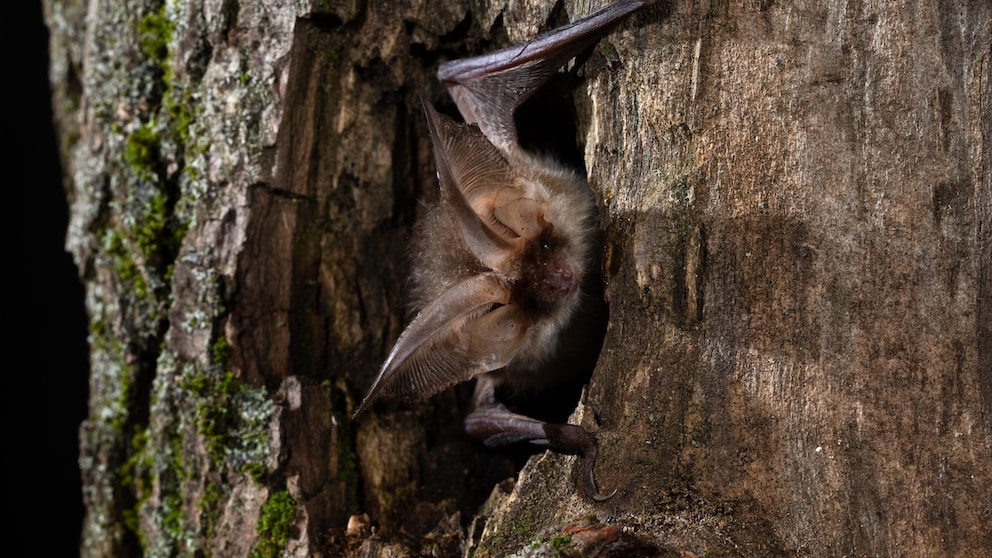February 4, 2025, 9:13 am | Read time: 4 minutes
Bats are not only very special animals because they are the only flying mammals. They also have a unique defense against viruses, which can be traced back to genetic changes in their immune system. These findings could be a real breakthrough for medicine in the fight against viruses.
Many wild animals can transmit diseases to humans. These so-called zoonoses are now becoming increasingly common as humans claim more and more animal habitats for themselves and thus inevitably come into contact with them. One of these animals that is forced to create habitats in the vicinity of humans – and inevitably brings its viruses with it – is the bat. So, how do bats transmit viruses without falling ill themselves?
It is considered an intermediate host for viruses such as malaria, Ebola, or the SARS virus, which also causes coronavirus. However, there is no need to be afraid of contact with bats. Quite the opposite, as a study has now shown. The animals’ clever virus defense and symptom-free immune strategy could lead to a medical breakthrough that could also benefit humans.
Most Viruses Do Not Bother Bats
Bats are the only mammals with active flight and have developed remarkable adaptations. These include an exceptional life expectancy and a high tolerance to disease. They are known to be natural reservoirs for many viruses, some of which can also be transmitted to other species. However, while these viruses can cause serious diseases such as Ebola, rabies, or COVID-19 in humans, bats themselves appear to be hardly affected.
A new study conducted as part of the Bat1K project analyzed the genomes of ten bat species and discovered striking genetic adaptations that could explain their impressive resistance to viral infections. For their study, published in the journal Nature, the researchers compared these with 105 other mammalian genomes and identified striking genetic patterns, particularly in immune and inflammatory genes.
They found that bats have a unique regulation of the immune system that prevents excessive inflammation and, at the same time, maintains an effective antiviral defense.
Bats Are All About Defense
One focus of the research was on the ISG15 gene, which is associated with severe cases of COVID-19 in humans. The study showed that bats have an altered version of this gene that significantly influences their immune response to SARS-CoV-2 and other viruses. This altered version inhibited the replication of the coronavirus by 80 to 90 percent! However, the changes to this gene did not stop there. The penetration of viruses into cells is also inhibited in bats. In addition, the immune defense cells of the blood and the interferon, which protects healthy cells from virus-infected cells, showed differences.
This is because the interferon must first be very active during an infection in order to prevent it from spreading and then remain dormant so that no autoimmune diseases are triggered. This seems to work exceptionally well in bats, as they also lack the receptors and genes that are responsible for the development of inflammation.
The researchers attribute these adaptations to the fast metabolism required for flight. This is because the metabolism must function well, supply energy quickly, and enable bats to move quickly so that they can take to the skies. At the same time, the metabolism also improves the immune system, which is activated by by-products of this process. The high viral tolerance of bats could, therefore, be a direct consequence of their evolutionary development into flying animals.

Why Pandas Are the Only Bears That Are Vegan

Decades of Assumption Disproved! Large Animals Do Get Cancer Faster

Study shows gorillas use plants medicinally
Further Research Needed
The study provides groundbreaking insights into how bats defend themselves against viruses. While the study has provided a new approach to antiviral therapies, it also shows how important it is to carry out further research. After all, it is unclear why bats have specialized so much in defending themselves against viruses – but at the same time still carry them in their bodies.
The exact function of ISG15 is also still unclear. It has been shown that it is also very active when the bats are not fighting viruses. The researchers, therefore, conclude that it does not only serve the purpose of protecting the animals from infections. It could also be responsible for the production of cells.
However, a study like this also shows how important research work is in the genome field. This is because the complete DNA of many animals has not yet been decoded, as this requires a lot of time and funding. However, research is necessary in order to recognize correlations, as in the case of bats. It also enables us to better assess and protect endangered species we still know very little about. 1

